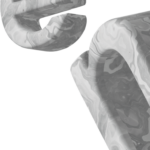

Set up your shop
Create my project

10 key principles of visual merchandising for a retail store by Sarah Manning, Visual Merchandising Courses & Consultancy
19 May 2023
Ankorstart have partnered with Sarah Manning at VMC to offer our retailers support and advice with Visual Merchandising & Window Dressing. Sarah has written these top 10 tips for applying effective Visual Merchandising throughout your store.
The visual merchandising principles
My top recommendation to my retailers and students is to obtain an understanding of how to apply the four Visual Merchandising principles, which include the presentation methods Symmetrical, Asymmetrical, Repetition and Alternation. These principles can be applied to your window space, in store Visual Merchandising and to E-Commerce Retail. These principles are my “toolbox” to assisting me with my own Visual Merchandising work! Some retailers may choose to work with a specific principle which would be best suited to their brand style but have in mind that all four principles can be used with any type of merchandise.
Symmetrical – A pyramid, creating a mirror image and balance either side. Top of the pyramid to be positioned at the eyeline level of your customer.
Asymmetrical – A half pyramid graduating either towards the left or right. When using within a window, ensure the graduation takes your customers eye towards the store entrance.
Repetition – The use of odd numbers, groups of 3 being most popular, creating a central focal point. Repeating a consistent pattern.
Alternation – An alternating pattern which assists our customers eyes flow through the composition with ease
The window dressing principles
Use the principles, Symmetrical, Asymmetrical, Repetition and Alternation for window dressing and creating displays. However, when applying these principles to product merchandising consider using Symmetrical, Repetition and Alternation only. The Asymmetric principle is not effective within product merchandising due to this being a display method – where merchandise feels too over dressed for the customer to feel comfortable with shopping from a space where this principle has been applied.
The eyeline level
When creating your shop window display, consider your customer profile and brand style to create a strong, consistent message for the customer. The average turnaround time scale of a store window is 4-8 weeks, this helps to create regular newness for your customer.
Remember to create impactful eyeline level height within your window, the principles of Symmetrical and Asymmetrical pyramids will help you to achieve this. The top of your pyramid should reach the eyeline of your customer whilst they are passing by your window, this location is referred to as a “focal point.” Your focal point should feature a brand, product, or message which you would like to highlight to your customer first, this is your priority location within your window, a location where your customer will focus upon first.
The use of colors
Consider the use of colour within your window. Colours which connect us back to nature or have a positive mood boasting quality have become popular over the past couple of years. I would recommend looking at trend forecasting companies; WGSN and Trend Bible for colour trends and pantone references of the season. I feel using a colour palate of three key colours and using them consistently throughout the display composition always seems to create a stronger impact.
Connecting your physical and digital window
Connect your physical store window to your digital channels by applying a vinyl QR code on the window front. This will assist with connecting both physical and digital channels and also offer the possibility of 24/7 purchases. Your E-Commerce homepage header banner should act like your digital shop window, so mirror the same campaigns and messages which you are highlighting within your store window within your header banner and social posts.
The hot spot
Create a connection to your window campaign by creating a hot spot space at the front of your shopfloor. Your hot spot should be the first location that customers see as they come into your store, most retailers position their hotspots within the central area at the front of their stores.
The hot spot space should mirror the campaign highlighted within your window. Ensure the same range of merchandise is displayed within this area, you can also include any props, signage and POS which are also used within the window to connect the two spaces. Your hot spot should be changed in line with any window changes.
Wall and table merchandising
It is important that your customers can shop your merchandise with ease and gain inspiration through link selling. My tip to presenting merchandise on a wall bay or table fixture is to consider the Symmetrical layout.
For a wall bay use a variety of equipment; shelving, front hanging bars and side hanging bars and install this creating a Symmetrical template. When creating a Symmetrical formation, it assists our customers to look at a space with ease and for their eye to focus upon the merchandise more effectively when shopping.
For table merchandising, consider creating a pyramid shape, which involves creating central height. This should bring the middle area of the table up to the customers eyeline level. As example, height can be created by using a mannequin bust form, platforms, or wooden crates.
Increase your possibilities of link selling by merchandising associated product lines together, this also helps to create customer inspiration whilst they shop and helps to create ideas of how customers can put or use those products together within an outfit or within their home.
The back areas
It can often be a challenge to encourage your customers to shop within the back areas of your shopfloor space! You may have noticed that many retailers position their popular product lines towards the back areas of their store, this would include product lines that they know most of their customers always come into purchase. You will also see service areas located within the back of the store too, these could include changing rooms, click and collect/ customer services and hospitality spaces. Therefore, consider which product lines or departments will draw your customers to the typically quiet back spaces?
Within the front areas of your shopfloor, you should feature your hot spot and new collections, these are product lines that you would like to prioritise highlighting to your customer, but they are not product lines that customers have necessarily come into store to buy.
Conducting a customer flow exercise
I was introduced to the concept of Customer Flow exercises whilst working within the Visual Merchandising team at Selfridges and I have used this customer mapping exercise within my own work ever since. A customer flow exercise is an extremely helpful exercise to assist with understanding the customer flow within your shopfloor space, it also helps us to re-evaluate where the opportunities are for us to improve upon our store layout and product locations.
The exercise involves us mapping on the customer activity onto a bird’s eye floor plan. I would recommend mapping on the journeys of five customers on your map, using a different coloured pen for each customer. Create a key to mark on the areas where your customers have paused to look at the merchandise and those areas where you saw a product picked up to purchase. Once you have marked on their journeys within your store floorplan, you will notice a pattern. Review your store plan to evaluate if all areas of your shopfloor are being accessed by your customers?
The importance of a peaceful ambience
Creating a peaceful ambience in your store has never been more important and we have seen retailers adjusting the ambience within their stores over the past couple of years, which has helped to encourage customers to come back to our high streets to shop. It is important to create a safe space for your customer, somewhere that they will want to spend more time browsing. We have seen a key trend in reconnecting to nature, using more natural colour tones, natural textures, and natural lighting to create a more calming and inviting environment.
Creating a multi-sensory experience for the customer has also been seen across our retailers, where they are not just creating a shopping experience but also a sensory experience for their customers. We have seen an introduction of an increase of hospitality experiences, craft, and mindfulness classes as well as Pop Up Shop retail concepts making their way into stores to combine with the customer’s shopping experience.
These are my current top 10 principles which I discuss on my courses & workshops and apply practically within my retailers’ stores.
Related posts "Create my project"

Here are a few pieces of advice to help you understand which are the main steps to follow while deciding the layout of your store.

Are you planning on starting a business in retail? Before you dive in, it’s crucial to conduct market research. This article will walk you through the process of why and how to conduct market research effectively, ensuring your retail business idea is built on a solid foundation of market insights and data-driven decisions.

For entrepreneurs opening a shop, designing a compelling brand identity is crucial to stand out from the competition.
This article explores how thoughtful product selection, marketing strategy and customer experience can boost sales and strengthen brand image.

We’ll take a deep dive into market research, taking a look at primary and secondary sources and how you, as a small retail business owner can conduct your own market research, as well as why you should!


